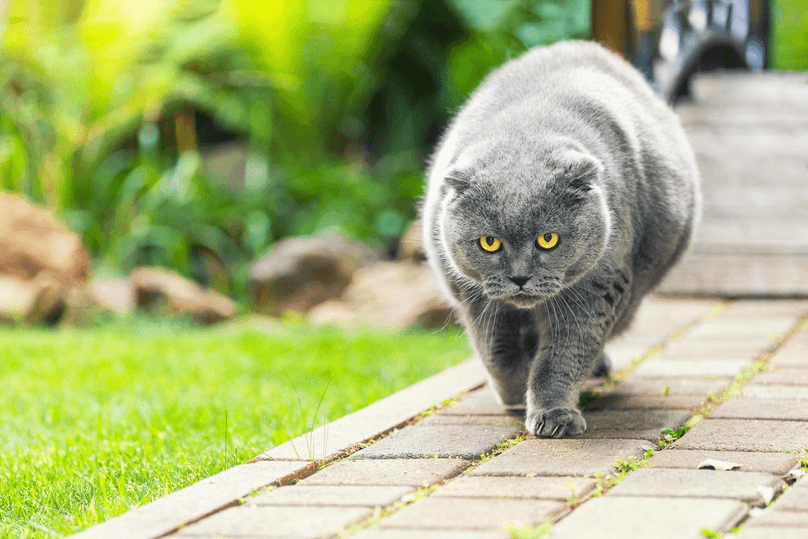
Feline diabetes affects about 1 in 200 cats (0.5-1.0% of the total cat population), and represents a growing concern among pet owners. According to a study conducted by Banfield Pet Hospital, the incidence of feline diabetes increased by an alarming 18.1% from 2006 to 2015. A chronic condition that can impact your pet’s quality of life, feline diabetes can be costly to manage over a pet’s lifetime.
Here we will discuss the signs of diabetes in cats, how the disease affects your cat’s health, and explore treatment options for caring for a diabetic cat.
What is Feline Diabetes?
Feline diabetes is a condition that makes it hard for your cat’s body to process sugar. It occurs when the pancreas cannot produce enough insulin (a peptide hormone vital to processing glucose). As a result, high levels of glucose accumulate in the blood.
In cats with diabetes, the pancreas either does not produce enough insulin or the body is unable to use the insulin effectively. This leads to a buildup of glucose in the blood, which can cause damage to organs, including the kidneys, liver, and eyes.
A rise in feline diabetes has been linked to several factors, including feline obesity (diabetes is more common in overweight cats) and longevity (diabetes is often seen as cats reach their senior years).
Signs of Diabetes in Cats
Diabetes is known as a “sly” disease, because its early symptoms and clinical signs are often subtle and hard to spot. As an informed pet owner, you’ll likely be first to witness any minor changes that may signal a health problem.
Some common signs and symptoms of feline diabetes include:
-
- Increased thirst and urination: This is one of the earliest signs of diabetes in cats. Cats with diabetes may drink more water than usual and urinate more frequently. Check your pet’s water consumption: Is your cat drinking from other sources, like the sink or toilet? These can be signs of dehydration resulting from diabetes.
- Weight loss despite appetite: Despite an increased appetite, cats with diabetes may lose weight. This is because the body is unable to process the glucose from food and begins to break down fat and muscle tissue instead.
- Lethargy: Cats with diabetes may become lethargic and lose interest in activities such as exercise and play.
- Vomiting: In severe cases, cats with diabetes may develop ketoacidosis, a life-threatening condition that can cause vomiting and lethargy. This is a later stage of disease and should be taken seriously. If your cat exhibits persistent vomiting, contact your vet immediately.
- Elevated blood glucose: An elevated blood glucose level is the most telling clinical sign of diabetes. It’s a simple test your vet can perform.
Remember that symptoms often have no sudden onset and instead develop slowly over time. If your cat displays any of these symptoms, contact your vet for a consultation. Obtaining your pet’s current blood glucose levels now can serve as a baseline for later testing. And ask your vet about the home care needs of your pet.
Diabetes Treatment and Costs
Treatment for feline diabetes is multifaceted and typically involves insulin injections, a special diet, and regular monitoring of blood glucose levels. While the cost of treatment can vary by disease severity or availability of insulin in your region, it is generally expensive.
The cost of insulin, the most common treatment for feline diabetes, can range from $50 to $150 per month. Additionally, maintaining your cat on a diabetic diet requires special foods, and these are more costly than bargain brands. The cost of keeping your pet on a diabetic diet can range from $50 to $100 per month. These expenses can put a dent in any family budget–unexpectedly.
The cost of blood glucose monitoring can also add up over time. Cats with diabetes require regular blood glucose monitoring to ensure that their levels remain within a safe range. This can involve frequent trips to the veterinarian and typically cost $40 to $60. Ask your vet to recommend a reliable home glucose monitoring kit for cats to reduce the frequency of visits.
In addition to the direct costs of treatment, there may also be indirect costs associated with feline diabetes. For example, if your cat requires regular veterinary visits to monitor their condition, you may need to take time off work to accompany them. This can result in lost wages and other expenses.
Also, if your cat already has an existing health condition that can be exacerbated by diabetes, there may be additional treatment costs. Work with your vet to arrive at the solution that best meets the needs of your pet and your wallet.
The Best Care at the Best Price
We all want the best care for our pets. But when they need an emergency procedure or long-term care, it’s easy for the costs to get ahead of us. One way to significantly offset the high cost of veterinary care attendant to feline diabetes is to obtain low-cost cat insurance before the onset of the illness.
While not all pet insurance policies cover pre-existing conditions like diabetes, some do. When choosing cat insurance plan, be sure to read the policy carefully for any exclusions, including certain treatment options. (Often insurer’s will include a sample pet insurance policy on their website for review.) It’s also important to consider the deductible and copay, and any add-ons (like wellness coverage), as these can affect the monthly cost of the insurance.